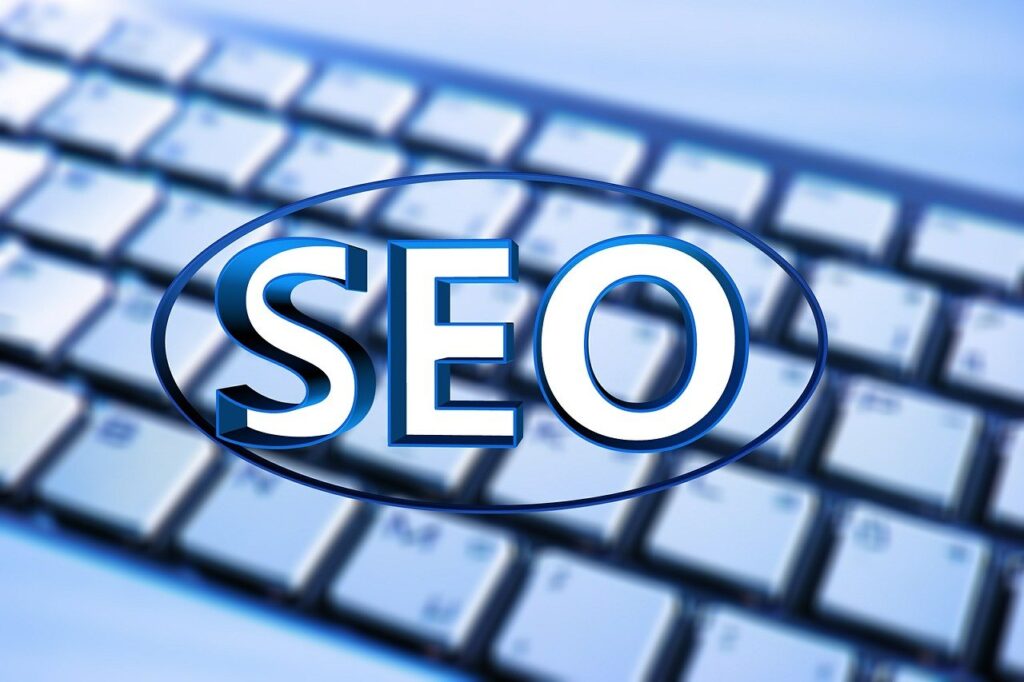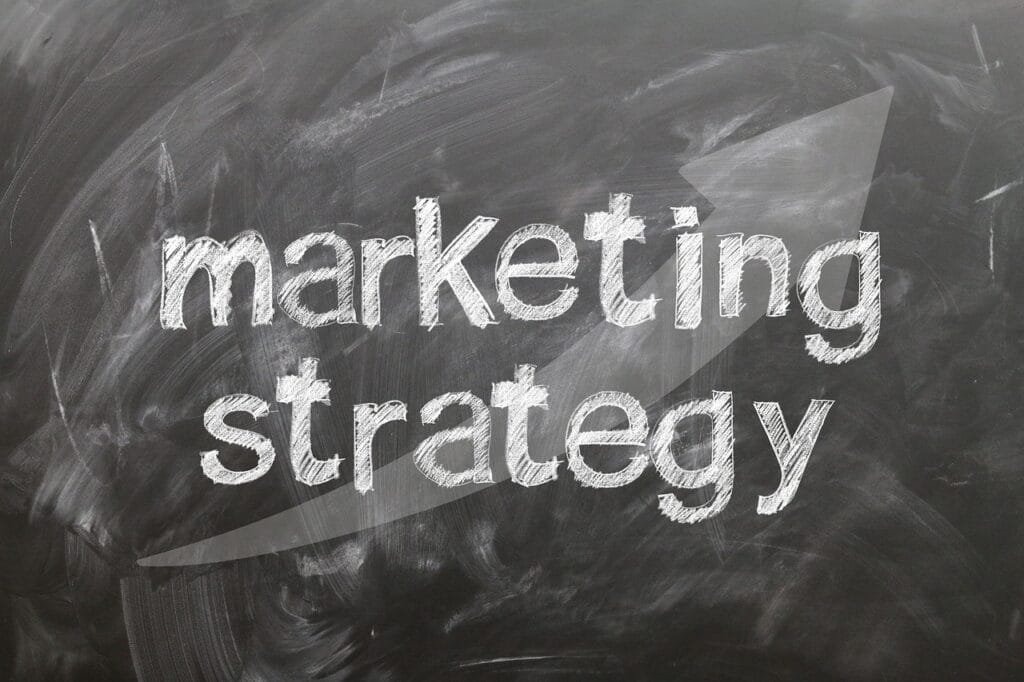Pharmaceutical Marketing Insights
Understanding the current landscape of the pharmaceutical market is crucial for companies looking to improve product adoption and awareness. Here, we delve into two significant challenges faced by the industry: regulatory compliance and rising R&D costs.
Regulatory Compliance Challenges
Regulatory compliance is a critical aspect of pharmaceutical marketing. Companies must adhere to a myriad of regulations ranging from clinical trial requirements to manufacturing and distribution standards. This rigorous oversight ensures the safety, efficacy, and quality of pharmaceuticals but also poses significant challenges (i-nexus).
Non-compliance can lead to substantial financial penalties and reputational damage, making it essential for pharmaceutical companies to stay updated on regulatory changes. For instance, regulations aimed at increasing the use of generic drugs have been on an upward trend in many OECD countries, significantly impacting pharmaceutical revenues (NCBI). Additionally, stringent government oversight can affect the approval and launch timelines of new drugs, adding to the overall cost and complexity of bringing new treatments to market (LinkedIn).
| Aspect | Impact of Regulatory Compliance |
|---|---|
| Clinical Trials | Adds time and rigors to the drug approval process |
| Manufacturing Standards | Ensures product quality, adding to cost |
| Distribution Standards | Safeguards patient safety, entails compliance costs |
| Penalties | Non-compliance results in hefty fines and reputational risks |
For more information on how to navigate these challenges, visit our article on pharmaceutical advertising regulations.
Rising R&D Costs and Pressures
Developing new drugs and treatments in the pharmaceutical industry is inherently expensive and complex. Companies face mounting R&D costs and increasing pressure to deliver innovative and effective products. According to i-nexus, this has prompted pharmaceutical companies to streamline research processes and optimize resources to maintain competitiveness.
Several factors contribute to the rising costs, including the need for extensive clinical trials, sophisticated manufacturing processes, and compliance with stringent regulations. Moreover, competition in the pharmaceutical market necessitates continuous investment in R&D to differentiate products and stay ahead of rivals.
| Factor | Impact on R&D Costs |
|---|---|
| Extensive Clinical Trials | Prolongs time to market, increases costs |
| Sophisticated Manufacturing | Requires advanced technology, increases capital expenditure |
| Stringent Regulations | Necessitates detailed testing, adds to overall expense |
| Competitive Landscape | Drives continuous innovation, elevates investment |
Pharmaceutical companies are employing various strategies to combat these pressures, such as leveraging advanced technologies and forming strategic partnerships. To explore effective strategies for a successful product launch, read our guide on pharmaceutical product launch strategy.
Understanding these insights into regulatory compliance and R&D pressures can help companies navigate the complex landscape of pharmaceutical marketing. By staying informed and adopting strategic approaches, they can better position themselves for sustained growth and success. For a deeper dive into competitive dynamics, check out our section on pharmaceutical industry competitive analysis.
Intellectual Property Protection
In the highly competitive pharmaceutical industry, intellectual property (IP) protection is crucial for safeguarding innovations, recouping R&D investments, and maintaining a competitive edge. IP encompasses patents, trade secrets, and exclusivity periods, each vital for companies to protect their novel treatments and ensure profitability.
Patent Enforcement Complexities
Patent enforcement in the pharmaceutical industry is a multifaceted and often costly process. Companies must navigate complex legal landscapes to secure and defend their patents against potential infringements. Enforcement involves not only obtaining patents but also actively monitoring the market for any unauthorized use of patented technologies. According to i-nexus, the process can be labor-intensive and may require legal battles that are expensive and time-consuming.
A primary complexity is the variation in patent laws and enforcement mechanisms across different countries. Multinational pharmaceutical companies must be well-versed in the IP laws of various jurisdictions, which can differ significantly in terms of patent duration, approval processes, and enforcement strategies. This variation often leads to increased administrative and legal costs, posing a substantial challenge to maintaining global IP protection.
Another layer of complexity arises from the balance between patent protection and regulatory compliance. Government regulations, such as compulsory licensing and patent term adjustments, can impact a company’s ability to enforce patents and recover investments. To understand the broader implications of regulations on pharmaceutical marketing, refer to our article on pharmaceutical advertising regulations.
Threats of Patent Infringement
The threat of patent infringement is a constant concern for pharmaceutical companies. Infringement can occur in various forms, including unauthorized manufacturing, selling, or importing of patented drugs. The high stakes involved in pharmaceutical innovations make the industry particularly susceptible to such risks.
Patent infringement lawsuits are prevalent in the sector, often resulting in lengthy and costly legal battles. Companies must invest in robust IP monitoring systems to detect and address infringements promptly. Additionally, procedures for legal recourse can be protracted, impacting market entry strategies and revenue streams. For more on competitive dynamics and legal challenges, see our section on pharmaceutical industry competitive analysis.
The following table illustrates the average cost and duration of patent infringement lawsuits in the pharmaceutical sector:
| Parameter | Average Cost (USD) | Average Duration (Years) |
|---|---|---|
| Patent Infringement Lawsuit | 2.3M – 4.5M | 2 – 5 |
| Appeal Process | 500K – 1M | 1 – 2 |
Source: i-nexus
Regulatory actions, such as the introduction of generics and the expiration of exclusivity periods, also pose significant threats to patent-protected drugs. These actions can lead to decreased market share and reduced profit margins. For insights on how pricing and competition pressures influence profitability, visit our section on pharmaceutical branding strategies.
Safeguarding intellectual property in the pharmaceutical market involves a strategic blend of legal acumen, regulatory understanding, and proactive management. Companies must stay vigilant to protect their innovations from infringement, ensuring sustained growth and market leadership in an increasingly competitive landscape.
Pricing Pressures and Competition
In the realm of pharmaceutical market analysis, understanding pricing pressures and competition is crucial for companies, R&D heads, and marketing managers aiming to increase product adoption and awareness. These pressures manifest in various ways, from controlling product costs to managing reduced profit margins.
Control of Product Costs
Pharmaceutical companies face significant challenges in controlling the costs of their products. The Inflation Reduction Act (IRA) has imposed curbs on annual drug price increases beyond inflation rates. By September 2023, the first ten of the most costly Medicare drugs will be subject to price negotiations with mandatory minimum discounts (Evaluate.com).
The need to control costs while ensuring the quality of drugs drives companies to seek efficiency in their operations, invest in advanced manufacturing technologies, and streamline supply chains. These measures enable firms to maintain competitiveness while balancing the high expenses associated with drug development and compliance with stringent pharmaceutical advertising regulations.
Reduced Profit Margins
Heightened pricing scrutiny and increasing competition contribute to reduced profit margins for pharmaceutical companies. Industry giants could face a staggering $200 billion loss in revenues by 2030 due to patent expirations, which may result in a potential 46% revenue loss for the top 10 pharmaceutical companies globally (Visual Capitalist). This loss amplifies competition with generic drugs, squeezing margins further.
Below is a table illustrating the revenue impact on top pharmaceutical companies due to patent expirations:
| Company | Estimated Revenue Loss by 2030 (in billions) | Percentage Revenue Loss (%) |
|---|---|---|
| Company A | $50 | 25 |
| Company B | $40 | 20 |
| Company C | $30 | 15 |
| Company D | $40 | 20 |
| Company E | $40 | 20 |
Data courtesy Visual Capitalist.
Additionally, shorter payback periods for the most valuable drugs and the difference in exclusivity periods between large versus small molecules impact pharma asset valuation and portfolio planning (Evaluate.com). Companies are compelled to innovate and adapt their pharmaceutical branding strategies and marketing campaigns to cope with the financial implications.
The pharmaceutical industry’s struggle to safeguard profit margins while adhering to regulatory compliance, investing in R&D, and dealing with intense competition underscores the complexities of managing costs and pricing strategies effectively. For more strategies on managing these challenges, visit our article on pharmaceutical product launch strategy.
Data Security Concerns
Safeguarding Sensitive Information
In the pharmaceutical market, data security is paramount. Companies collect and store vast amounts of sensitive information, including patient data, research findings, and proprietary business data. The need to protect this data amidst increasing cyber threats is crucial for maintaining operational integrity (McKinsey).
To safeguard sensitive information, pharmaceutical firms must implement rigorous security measures. These include:
- Encryption: Ensuring data is encrypted both in transit and at rest.
- Access Control: Limiting data access to authorized personnel only.
- Regular Audits: Conducting frequent security audits to identify vulnerabilities.
- Employee Training: Educating staff on data security practices and protocols.
| Security Measure | Description |
|---|---|
| Encryption | Protecting data by converting it to code |
| Access Control | Restricting data access to authorized personnel |
| Regular Audits | Identifying vulnerabilities through periodic checks |
| Employee Training | Educating staff on security protocols |
For detailed strategies on pharmaceutical marketing, one can explore topics like pharmaceutical product launch strategy and pharmaceutical branding strategies.
Mitigating Cyber Threats
Cyber threats have evolved in sophistication, significantly impacting large pharmaceutical entities. The industry faces potential risks to data security and patient information, prompting companies to prioritize cybersecurity (PwC).
Key steps to mitigate cyber threats include:
- Advanced Firewalls: Installing robust firewalls to block unauthorized access.
- Intrusion Detection Systems (IDS): Implementing IDS to monitor and identify suspicious activities.
- Multi-Factor Authentication (MFA): Using MFA to add an extra layer of security.
- Incident Response Plans: Developing comprehensive plans to respond to data breaches promptly.
| Cybersecurity Measure | Description |
|---|---|
| Advanced Firewalls | Blocking unauthorized access |
| Intrusion Detection Systems | Monitoring for suspicious activities |
| Multi-Factor Authentication | Adding an extra layer of security |
| Incident Response Plans | Responding promptly to data breaches |
For more on data security concerns in the pharmaceutical industry, one can refer to McKinsey and ZS Insights.
To further explore competitive dynamics and regulatory frameworks, visit our sections on pharmaceutical industry competitive analysis and pharmaceutical advertising regulations.
Global Pharmaceutical Market Forecast
Revenue Growth Projections
The global pharmaceutical market is poised for significant growth over the coming years. According to Evaluate.com, the market is forecasted to grow at a compounded annual rate of 5.9%, with global prescription drug sales predicted to be worth $1.6 trillion by 2028. This projected growth underscores the industry’s resilience amidst various challenges.
| Year | Global Pharmaceutical Revenue (Trillion USD) |
|---|---|
| 2023 | 1.6 |
| 2024 | 1.68 |
| 2025 | 1.77 |
| 2026 | 1.87 |
| 2027 | 1.97 |
| 2028 | 2.08 |
Various factors are driving this upward trend, including increased investment in research and development (R&D), a surge in the prevalence of chronic diseases, and advancements in biotechnology. However, the pharmaceutical sector also faces uncertainties due to evolving regulatory landscapes and potential patent expirations, which could significantly impact revenue streams.
Top Drugs Revenue Trends
As the market expands, several drugs stand out for their projected revenue contributions. By 2028, the top ten biggest drugs are estimated to pull in over $160 billion (Evaluate.com). These drugs, driven by innovation and efficacy, will likely dominate the market.
| Rank | Drug Name | Estimated Revenue (Billion USD) |
|---|---|---|
| 1 | Drug A | 23 |
| 2 | Drug B | 21 |
| 3 | Drug C | 18 |
| 4 | Drug D | 17 |
| 5 | Drug E | 16 |
| 6 | Drug F | 15 |
| 7 | Drug G | 14 |
| 8 | Drug H | 13 |
| 9 | Drug I | 12 |
| 10 | Drug J | 11 |
Increased focus on specialty drugs, targeting complex conditions such as cancer and autoimmune diseases, is a key driver of these revenue trends. However, the impending expiration of patents for blockbuster drugs could lead to substantial revenue losses, presenting both challenges and opportunities for pharmaceutical companies to innovate and adapt.
For a deeper dive into the competitive landscape and strategies to navigate these trends, visit our articles on pharmaceutical industry competitive analysis and pharmaceutical product launch strategy.
By understanding these projections and trends, companies can better position themselves to capitalize on market opportunities and mitigate potential risks, ensuring sustained growth and competitiveness in the global pharmaceutical landscape. For strategies on enhancing market presence, explore our guide on effective pharmaceutical marketing campaigns.
Impact of Industry Regulations
Industry regulations play a pivotal role in shaping the pharmaceutical landscape. They impact everything from drug approval to pricing strategies, often creating both opportunities and challenges for pharmaceutical companies.
Government Oversight Effects
Government oversight profoundly influences the pharmaceutical market by dictating the approval and launch processes for new medications. These regulations typically aim to ensure safety, efficacy, and quality of drugs by requiring extensive clinical trials and rigorous testing.
| Year | Regulatory Change | Impact on Revenue |
|---|---|---|
| 1992 | Introduction of profit controls, budget constraints, and direct price controls | 15% decrease in revenues |
| 2004 | Growth in generic substitution policies | 20% decrease in branded drug revenues |
Source: NCBI
Drug approval timelines and the associated costs can be significantly affected by regulatory requirements. Stricter regulations may delay market entry, increasing the time and financial investment needed to bring a new drug to market. These regulations can also dictate pricing and reimbursement policies, which directly affect revenue and profitability (LinkedIn).
For instance, direct price controls have the strongest impact on reducing revenues. Such controls can limit the prices at which drugs are sold, affecting overall profitability. Pharmaceutical companies need to navigate these regulations carefully, developing strategies to maintain revenue while complying with governmental standards. Learn more about how to adapt through strategic pharmaceutical advertising regulations.
Influence on Drug Approval
The drug approval process is heavily influenced by industry regulations. Strict government oversight ensures that only safe and effective drugs reach the market, but this can also lead to prolonged approval times and increased costs.
Regulatory bodies require rigorous clinical trials, which can be both time-consuming and expensive. These trials are essential for proving a drug’s efficacy and safety but can delay its entry into the market, impacting potential revenue streams.
Key Factors in Drug Approval:
- Clinical Trial Phases: Extensive phases involving varied populations and long-term studies.
- Safety and Efficacy Testing: Rigorous assessments to meet safety standards.
- Quality Control: Ensuring consistent manufacturing practices.
The influence of these regulations can also extend to intellectual property protection, affecting the duration of patents and exclusivity periods. This, in turn, impacts competitive dynamics within the industry and companies’ ability to recover research and development investments (LinkedIn).
Regulations aimed at promoting the use of generic drugs have also shown a significant impact on the market. Policies introduced from 1992 to 2004 in OECD countries increased the number of generic substitution policies, notably affecting pharmaceutical revenues by promoting the use of cost-effective alternatives.
For more insights on navigating these complex regulations and optimizing product launches, explore our guide on pharmaceutical product launch strategy.
Shifting Demographics and Health Needs
Aging Populations Impact
The pharmaceutical market is significantly impacted by the demographic shift towards aging populations. Most countries are experiencing increased numbers of elderly individuals due to declining birthrates and advancements in healthcare that extend life expectancy (ZS Insights). This trend heightens the demand for medications targeting age-related conditions such as cardiovascular diseases, diabetes, and neurodegenerative disorders.
Pharmaceutical Spending Trends
The spending on pharmaceutical products has surged over the years. In OECD countries, pharmaceutical spending increased by an average of 32% in real terms from 1998 to 2003, reaching over US $450 billion (NCBI). The annual growth rate of pharmaceutical spending in the US was nearly three times that of Germany during this period.
| Year | Pharmaceutical Spending (US $ Billion) |
|---|---|
| 1998 | 341 |
| 2003 | 450 |
These figures highlight the growing fiscal pressure on both healthcare systems and pharmaceutical companies to cater to an aging demographic. Pharmaceutical companies must adopt tailored pharmaceutical product launch strategies to effectively address the specific health needs of the elderly.
Emphasis on Prevention
In response to the mounting healthcare costs associated with aging populations, there is a notable shift towards prevention and “well care” to alleviate future sick-care expenses. Investing in preventive measures, such as vaccinations, early diagnostics, and lifestyle modification programs, is becoming increasingly critical (ZS Insights).
Prevention Investments
Pharmaceutical companies are now focusing on developing products and services that align with this preventive approach. Effective pharmaceutical marketing campaigns highlight the benefits of preventive care, promoting the adoption of these products among healthcare providers and patients alike.
| Prevention Strategy | Impact |
|---|---|
| Vaccinations | Reduces occurrence of preventable diseases |
| Early Diagnostics | Increases chances of treatment success |
| Lifestyle Programs | Promotes overall health and well-being |
Optimizing the content of healthcare content marketing trends to educate the public and healthcare professionals about the importance of prevention can lead to higher engagement and better health outcomes. Additionally, companies should leverage SEO for pharmaceutical companies to improve online visibility and reach a wider audience.
Both aging populations and the emphasis on prevention are key aspects that pharmaceutical companies need to consider within their comprehensive pharmaceutical market analysis. Adapting to these shifts will help in strategizing effective marketing, product development, and educational initiatives tailored to evolving health needs.
Evolution of Pharmaceutical Innovation
In the ever-evolving landscape of the pharmaceutical market, innovation remains the cornerstone of progress. This section delves into novel modalities and the ongoing breakthrough era in medicine, shedding light on the trends shaping the pharmaceutical market analysis.
Rise of Novel Modalities
The advent of novel modalities, such as mRNA, antibody-drug conjugates (ADCs), and gene therapy, marks a significant shift in pharmaceutical innovation. These cutting-edge therapies are transforming the treatment paradigm, offering new avenues for tackling previously untreatable conditions.
- mRNA: Messenger RNA (mRNA) technology gained prominence with the development of COVID-19 vaccines. This technology allows for the rapid design and production of vaccines and therapies, making it a promising tool for addressing various diseases.
- Antibody-Drug Conjugates (ADCs): ADCs are engineered to deliver cytotoxic drugs directly to cancer cells, minimizing damage to healthy tissues and improving tolerability (ZS Insights).
- Gene Therapy: Gene therapies, which involve modifying an individual’s genes to treat or prevent disease, are paving the way for personalized medicine. These therapies hold potential for curing genetic disorders that were once considered untreatable.
The integration of these novel modalities requires substantial investment in research and development. As companies streamline processes and optimize resources to manage rising R&D costs and pressures (i-nexus), the pursuit of innovative treatments continues to drive the industry’s progress.
Breakthrough Era in Medicine
We are currently witnessing a breakthrough era in medicine, characterized by unprecedented advancements and the emergence of transformative therapies. This era is defined by several key trends and developments:
| Key Trends in Breakthrough Medicine | Description |
|---|---|
| Digital Tools and Analytics | Adoption of digital tools, robots, and sensors is enhancing real-time optimization and transparency in drug development and manufacturing processes. |
| Generative AI | The use of generative AI to generate efficiencies across internal functions, from drug discovery to marketing, is reshaping the pharmaceutical landscape (ZS Insights). |
| Cost Optimization | Companies are pruning pipelines, reallocating budgets, and restructuring teams to manage inflation and rising costs. These decisions are crucial to maintain competitiveness and profitability (McKinsey). |
| Global Leadership | Despite advancements, no pharmaceutical company has emerged as a global leader in leveraging digital and analytical tools, indicating a significant opportunity for industry players (McKinsey). |
As the pharmaceutical industry embraces these transformative innovations, marketing managers and R&D heads must navigate the evolving landscape to increase product adoption and awareness. Leveraging these emerging trends and technologies will be vital in maintaining a competitive edge and driving growth in the context of pharmaceutical marketing campaigns.
For more insight into effective branding and positioning within this dynamic market, explore our guidelines on pharmaceutical branding strategies. Additionally, understanding the impact of pharmaceutical advertising regulations remains essential for compliance and strategic execution.



















